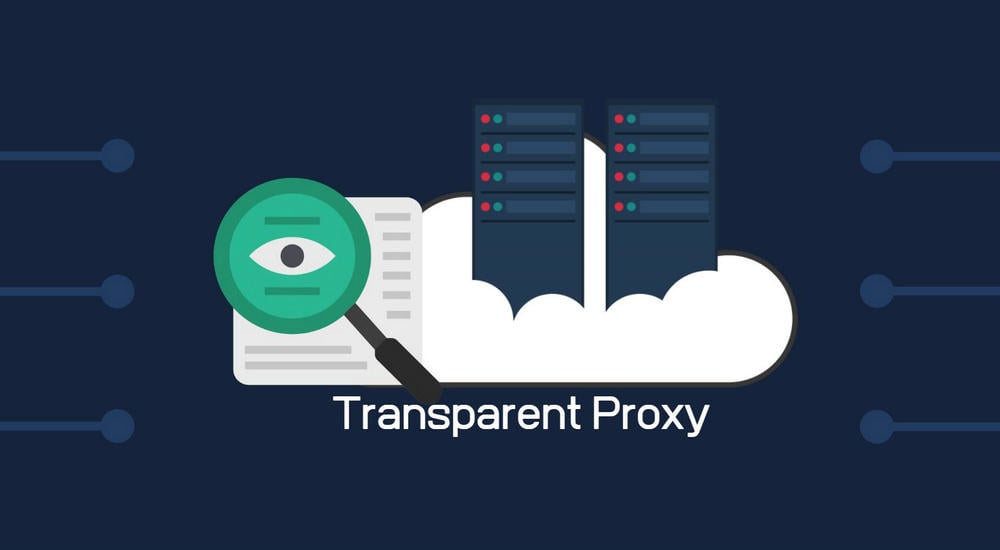Come in now to learn more about Transparent Proxies. Read our expert knowledge and know what Transparent Proxies are, what they are used for, and how to discover them.

While people are very much aware of anonymous proxies and even see them as the only type of proxies, there is another type of proxies that do not enjoy much popularity among Internet users – Transparent Proxies. Interestingly, they are much common than you think and are used in many situations. People use them without knowing.
This is not unconnected to the fact that you are never told about it because, well, it is none of your business until you meet it checklist for restriction. However, as an Internet user, it is important you know what they are.
What is a Transparent Proxy?
Transparent Proxies are a different type of HTTP proxies that do not modify requests sent through them. Your IP Address and other information that could be linked to you and your device are sent to the website.
They are unobtrusive and either allow requests to pass through them or deny you access if certain conditions are not met. Because they do not modify your requests and do not notify you of their presence, you can’t tell whether they are there or not – unless you carry out a test.
However, they can be both beneficial to you or become a source of worries and ultimately decide your web surfing experience.
Related,
How Transparent Proxies Work
Transparent Proxies are just like any other types of proxies; they are intermediaries that requests sent to web servers pass through them before reaching the intended web server. They are placed strategically in the middle, and requests are routed through them. Unlike anonymous proxies that you need to configure for them to work, Transparent Proxies requires no configuration from your end – and that’s why most people do not know about them.
REMOTE_ADDR = proxy IP address
HTTP_VIA = proxy IP address
HTTP_X_FORWARDED_FOR = your IP address
So, When you using the transparent proxy, The website owners know you are using a proxy for “HTTP_VIA” but also know your real IP!
When requests are sent through a Transparent Proxy, the request is intercepted, with the REMOTE_ADDR header modified and filled with the IP Address of the proxy server, telling the websites that the request passed through it. the HTTP_X_FORWARDED_FOR header will carry your IP Address and the HTP_VIA is enabled, getting the website to know that the request originates from you, but passes through a proxy server.

They are configured usually by the Internet Service Providers and organizations you use their WiFi. The proxies can have access to your request data and can modify it for malicious purposes – in this case; it becomes a type of cyber attack known as Man in the Middle Attack. However, in most cases, no malicious activity is carried out, you are censored and content filtered. Some of them are even helpful.
How to Detect Transparent Proxies
Even though you are not told of their awareness, there are some tricks you can use to detect if your requests are routed through proxies. It is very important you know so that you avoid sending inappropriate web requests when you are being censored.
In some locations, you can simply send requests to websites you expect to be restricted and see if your requests go through. This method is not effective as they might allow you to monitor your activities.
For many Transparent Proxies, you can detect them by visiting a URL you know that does not exist. If you are not using a proxy, you get the normal error message, which depends on the browser you’re using.
However, if your requests go through a transparent proxy, you will get a different error message. Some will even redirect you to another page. For a more automated and robust solution, you can make use of services for detecting proxies. There are many of them on the Internet, with various levels of reliability.
Regardless of the method you use, it is important you know that some Transparent Proxies will completely evade detection.
Transparent Proxy Use Cases
You might be wondering what Transparent Proxies are meant for, right? Aside from hackers using them for their malicious activities, they have other use cases that you might see as been helpful or not, depending on the side of the divide you are.
-
Censorship and Filtering
Perhaps, the most common application of Transparent Proxies is in the area of censorship. Censorship is real on the Internet, and you probably have been under monitoring without even knowing. You only get to know you are being monitored when you are found breaking the rule.
Government and enterprises, and even schools, make use of Transparent Proxies to restrict access to certain websites on the Internet. So far you do not access restricted websites, you won’t know. However, if you try accessing any website that’s restricted, you will be shown an error message.
-
Gateway for Authentication

Have you tried using a public Wi-Fi, and then you were redirected to a page where you are asked to provide your authentication details before you can proceed? That’s a Transparent Proxy right there, intercepting your request and making sure you are authorized to use it before your requests can pass through.
-
Web Caching
Proxies can be useful in the area of web caching. Your Internet Service Providers (ISP) or office may employ the use of proxies to reduce bandwidth usage and reduce the time you spend waiting for a response for your web requests.
When you first make a request, the proxy fetches the data and save a local copy. When you or any other person within the same network trying to access the same resources, instead of sending a fresh request to the website, it just fetches the saved copy. A sort of a Content Delivery Network (CDN) on a micro-scale.
Related, What is a Reverse Proxy?
Conclusion
No doubt, while Transparent Proxies can be a source of worry as some of them are set up for malicious purposes, some of them are useful, such as in the case of proxies for caching and the ones that serve as gateways for authentication.
If you suspect your requests are being routed through Transparent Proxies without your consent, I will advise you use any or all of the methods discussed above to find out before you continue surfing the Internet to avoid stories that touch the heart.






